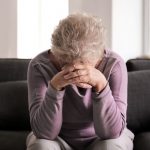
A survey of Australian adolescents finds those who are experiencing depressive symptoms have double the risk of taking up vaping. “In the short term, nicotine may reduce feelings of anxiety and stress, and young people may be reaching for vapes as a coping mechanism,” said study co-author Emily Stockings. “Regardless of whether mental ill health influences smoking or vice-versa, it is clear that if we are to prevent vaping onset, we need to address mental health at the same time,” said Stockings, who is an associate professor of medicine at the University of Sydney’s Matilda Center. Her team published its findings Sept. 2 in the Australian & New Zealand Journal of Psychiatry. The study tracked the mental health and vaping rates of more than 5,000 Year 7 and 8 students (about 12-13 years of age) from 40 schools in New South Wales, Queensland and Western Australia. About 8.3% said they’d used e-cigarettes. Compared to kids with low stress levels, those who said they had moderate levels of stress were 74% more likely to have taken up vaping, and those who said they had high stress levels were 64% more likely to vape, the study found. Vaping was 105% more likely among adolescents who rated their well-being as low versus though who said it was high. There was no link between anxiety levels and adolescent vaping,… read on > read on >
























-300x200.jpg)













